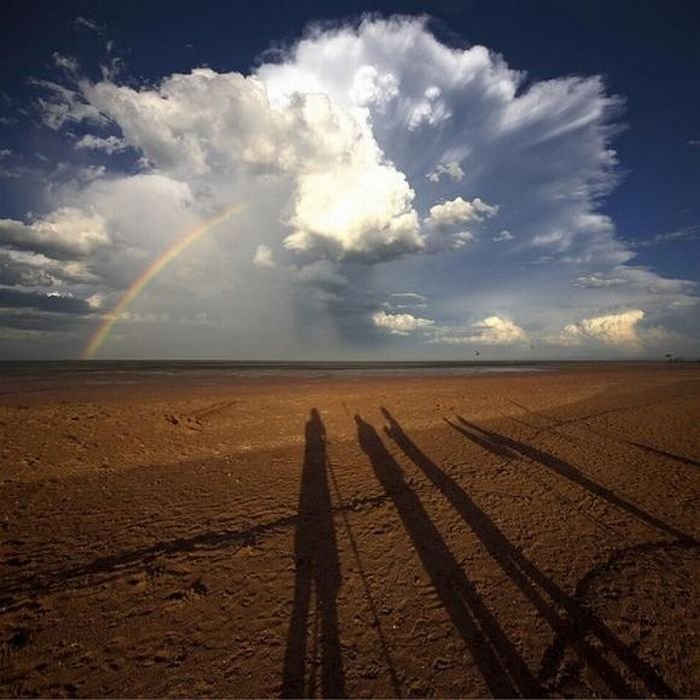|
|
Spectrum Of Rainbow Light
|
A third, or tertiary, rainbow can be seen on rare occasions, and a few observers have reported seeing quadruple rainbows in which a dim outermost arc had a rippling and pulsating appearance. These rainbows would appear on the same side of the sky as the Sun, making them hard to spot. One type of tertiary rainbow carries with it the appearance of a secondary rainbow immediately outside the primary bow. The closely spaced outer bow has been observed to form dynamically at the same time that the outermost (tertiary) rainbow disappears. During this change, the two remaining rainbows have been observed to merge into a band of white light with a blue inner and red outer band. This particular form of doubled rainbow is not like the classic double rainbow due to both spacing of the two bows and that the two bows share identical normal colour positioning before merging. With both bows, the inner colour is blue and the outer colour is red.
Higher-order rainbows were described by Felix Billet (1808–1882) who depicted angular positions up to the 19th-order rainbow, a pattern he called "rose". In the laboratory, it is possible to observe higher-order rainbows by using extremely bright and well collimated light produced by lasers. A sixth-order rainbow was first observed by K. Sassan in 1979 using a HeNe laser beam and a pendant water drop. Up to the 200th-order rainbow was reported by Ng et al. in 1998 using a similar method but an argon ion laser beam.
|
|









